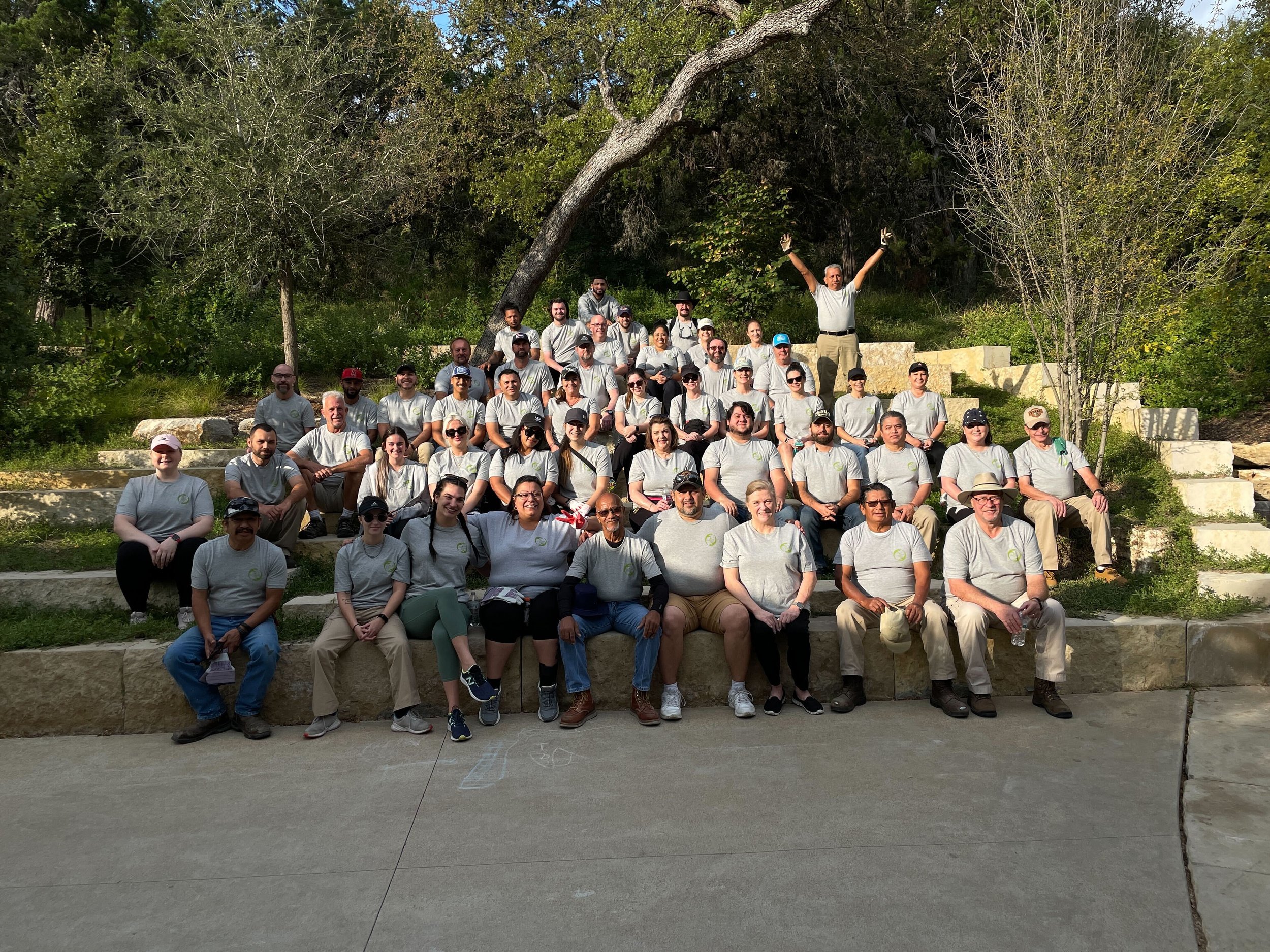El otoño fue el mejor momento para los proyectos de conservación en Pease Park. Vimos muchas caras conocidas y nuevas en nuestros eventos recurrentes de voluntarios y pudimos acoger a grandes grupos para implementar algunos proyectos nuevos en los 84 acres. Tras hacer frente a la histórica sequía de este verano, pudimos centrar nuestra atención en mitigar la erosión y eliminar algunas molestas plantas invasoras.
You may have noticed some new structures along the trails on the Kingsbury Hillside. They look like logs laid across the trail with small rocks placed on the downslope. These curious little barriers are called waterbars, and they are a form of stormwater management that helps to catch, slow, and redirect the flow of stormwater off of the walking trails to reduce the impacts of erosion and help keep the trails stable and walkable. If you have ever been hiking in a National or State Park, you may have seen very similar structures.
These installations were made possible by the funding and volunteerism of Gables Residential, a local apartment real estate agency here in Austin. With the help of their 70-person team we were able to install 18 waterbar structures. Additionally, the volunteers helped spread out our pile of juniper brush that we collected from the previous year’s freeze to create a forage and perching habitat for native bird species, build a new trail that allows easier access from the hillside to the western trail in Kingbury, and plant 96 5-gallon, native understory plants consisting of Pink Texas Skullcap (Scutellaria suffrutescens), Chili Petin (Capsicum annuum), American Beautyberry (Callicarpa americana), and Turk's Cap (Malvaviscus arboreus).
If you have been along the trail north of the Gaston Dog Park around the end of October/beginning of November, you may have heard the sound of chainsaws and spotted some people in bright orange hardhats. These mechanized lumberjacks are part of the Texas Conservation Corps, who were brought in to help fight the takeover of an invasive species known as Waxy-leaf Privet (Ligustrum quihoui). Waxy-leaf Privet (Ligustrum quihoui) was introduced to the Americas from East Asia as an ornamental small tree or shrub for use in residential and commercial landscaping as far back as the 1700s.
When Ligustrum is introduced to an ecosystem, it quickly spreads and dominates the understory, creating a monoculture that blocks sunlight from reaching the native plants that normally reside there. This reduces the biodiversity of the area and in areas where the ligustrum gets dense enough, it can become a fire risk.
After the ligustrum is removed and treated, native plants and seeds can be added to the area to encourage the recovery of the space. Additionally, brush that is created by removing the ligustrum can be chipped and spread to create ground cover to help reduce the impacts of erosion while native species begin to fill in.
We want to thank you for your involvement in helping us keep Pease Park a healthy urban ecosystem. Keep your eyes peeled for new and exciting conservation projects in the New Year!
Learn more here.








